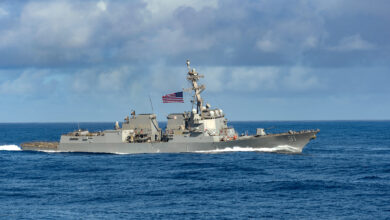The US Navy has assigned the E-130J airborne command post and communication relay aircraft to replace the E-6B Mercury as the next Take Charge and Move Out (TACAMO) mission platform.
The designation is part of an effort to move on from the Boeing-made fleet, which has been operating for the service’s TACAMO tasks since the late 1980s for “no-fail” coordination between the Executive Office, the Secretary of Defense, the US Strategic Command, and the Naval Ballistic Missile Forces.
TACAMOs also facilitate the launch of land-based intercontinental ballistic missiles through an airborne launch control system concurrently with an underground command and control post.
Next-Gen TACAMO Aircraft
The E-130J will be based on a modified C-130J-30 Super Hercules military transport plane. Its mission design series “E” stands for special electronic installation, while the “130” reflects its origin airframe.
The aircraft’s common name (Mercury) is yet to be announced.
Request for the mission design series designation was approved by the US Air Force in October 2024.
The US Navy already acquired three pre-production E-130Js in 2023 for air vehicle and mission systems evaluation. Contracts for the first three production units are expected to be awarded in 2027 and another for six in 2028.
“I am proud to announce that the US Navy’s new TACAMO aircraft will be the E-130J,” US Navy Airborne Strategic Command, Control and Communications Program Manager Capt. Adam Scott stated. “This is an important milestone as we work toward delivering the next generation of TACAMO aircraft to the warfighter.”

Home Base in Oklahoma
Once commissioned, the E-130J will be flown by the Strategic Communications Wing 1 (SCW-1) at Tinker Air Force Base, Oklahoma.
This group — which includes the “Ironmen” of Fleet Air Reconnaissance Squadron VQ 3, “Shadows” of VQ-4, and “Roughnecks” of VQ-7 — is responsible for the administration, training, sustainment, and logistics related to the E-6 Mercury fleet.
“I’m excited as SCW-1 continues to work together with PMA-271 to deliver new capabilities and strengthen America’s nuclear deterrence,” SCW-1 Commander Capt. Britt Windeler remarked.
“The E-130J will assure that our nation’s leadership maintains control of its strategic forces as the E-6B gets closer to end of life, and enable it to focus on the performance of other critical missions until sundown.”













